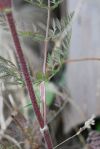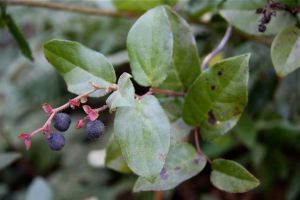These amazingly beautiful lilies are in full bloom on Ring Mountain right now–catch them before they are gone! Tiburon mariposa lilies (Calochortus tiburonensis) grow only on the Tiburon peninsula–where they weren’t discovered until 1971, and were listed as Federally threatened in 1995. It grows on Ring Mountain along with several other rare species that are associated with serpentine soils.
This striking lily sprouts a handful of blooms (2-7) on a single stem with a single leaf. The blooms can be brownish, yellowish, or greenish with dense hairs on the inner surface of its three petals. Darker brown markings decorate flowers.
A good place to see these blooms is along the rocky slopes of the western fork of the Phyllis Ellman trail on Ring Mountain, near point-of-interest marker post #14 (this is the westernmost leg of the loop trail; the right-hand fork if you start from the Paradise Drive parking area).














